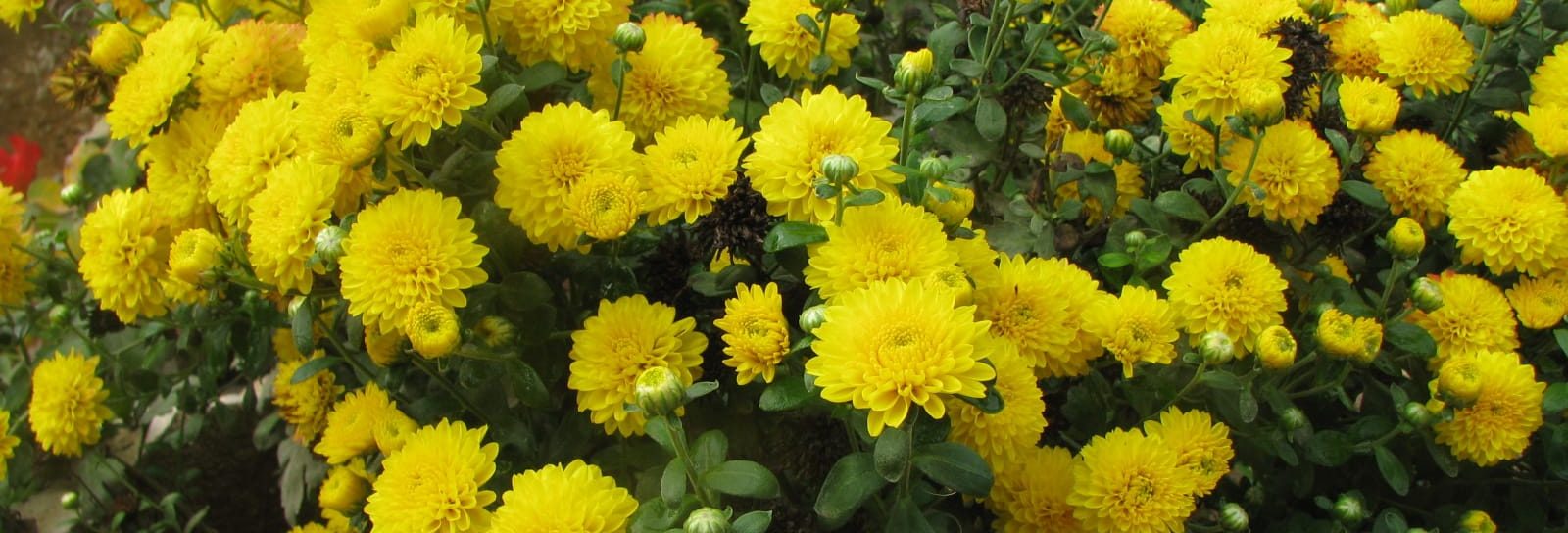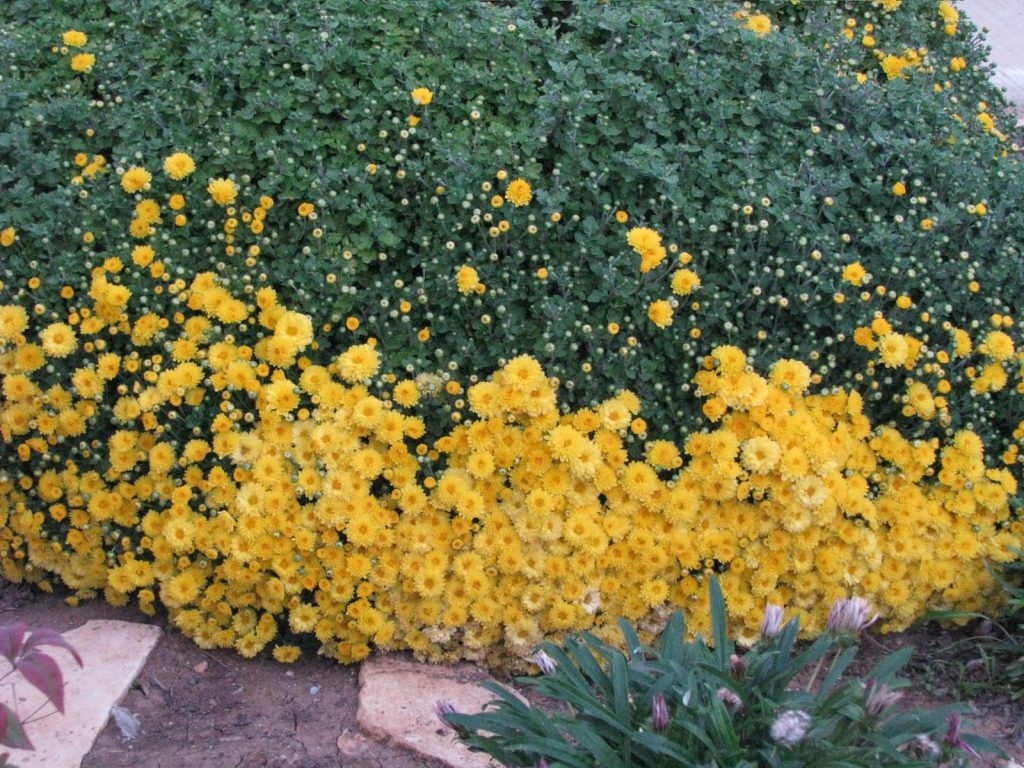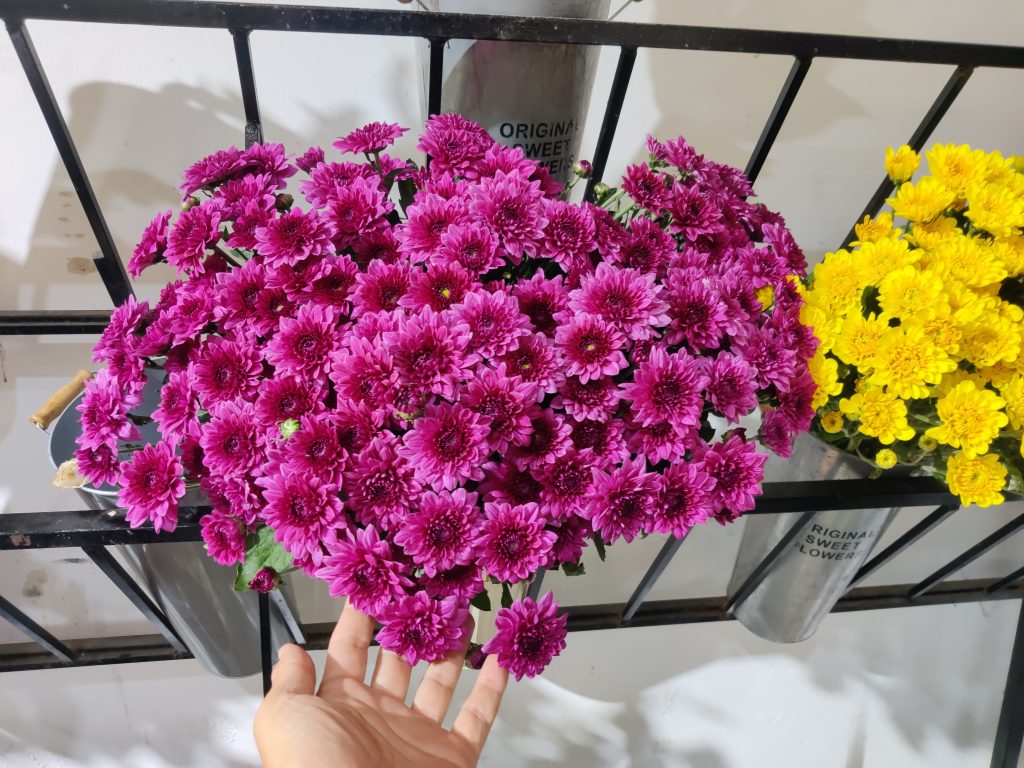
Chrysanthemum morifolium - Mums
Family: Asteraceae | Origin: China and East Asia. Hybrids
In perfect timing with the coming holidays: a flowering perennial plant perfect as a bouquet or as a flowering pot. Planted in a container or in the garden it can be enjoyed for years
Many people are familiar with the chrysanthemums, a group of species, varieties and especially hybrids widely used as cut flowers and in gardenning. It is also a well known secret that although you can buy them blooming in nurseries during most of the year, they bloom naturally in autumn waiting for the shorter days and longer nights, what is known as short day plants. The breeders manage to grow them to a suitable size and then darken the growing areas for a few hours each day so that they think autumn has arrived and grow buds and flowers in other seasons as well.
This huge group is divided into subgroups where each plant has its own cultivar name, but in Israel it is customary to refer to only two groups –
This huge group is divided into subgroups where each plant has its own cultivar
:name, but in Israel it is customary to refer to only two groups
Multiflora group

Includes compact varieties with a symmetrical and rounded cushion structure, which are excellent garden plants, but not suitable as cut flowers. These plants have small, toothed leaves with a pleasant smell and relatively short green stems that naturally split into sub-stems and thus grow to a beautiful green spherical cushion.
In autumn, between October and December, hundreds of flowers open in a spectacular bloom, followed by beautiful secondary waves. Between the waves of flowering, you should prune the withered flowers for a fresh look.
Multiflora chrysanthemums grow well in a soil enriched with compost and in pots in full or partial sun and with regular watering. Expect a wide pillow measuring 50*30 cm, but under optimal conditions it can reach 80*50 cm and even more! At the end of all the flowering waves, it is recommended to prune the plant low and soon the green cushion will develop again. These plants prefer the cool montain regions where they usually thrive for 3-5 years after which they should be replaced.
Tall Chrysanthemum varieties

These are sold as small plants that bloom in a variety of colors, but naturally grow tall when planted. They are great as cut flowers and in the garden are mainly suitable behind bushes or tied and supported to a stick or post. There are hundreds of different cultivars and in general they all have toothed fragrant leaves that are larger than those of the multiflora varieties.
These plants grow quickly and high and to avoid falling and breaking it is advisable to prune them 2-3 times a year to half the height no later than August and thus get shorter and stronger branches. Some thin out the buds to get bigger and more impressive flowers.
The tall Chrysanthemums are bes planted in rich soil or in a large pot in full or partial sun and with regular watering. The flowering usually comes in two waves and the cut flowers hold nicely for about two weeks.
In this group some varieties are long-lived and some die after several years, but it is not possible to know at the time of purchase which type you buy.
To the joy of chrysanthemum lovers, there is one variety, which blooms naturally from spring to autumn continuously! This is a variety whose origin is unknown and was introduced to gardening years ago by Netaf nursery, hence its name.
'Chrysanthemum x morifolium 'Neta

Is a rounded sub-shrub reminiscent of the multiflora varieties, but its growth is less dense. At its height it will reach 50×50 cm or a little more and will be covered with an abundance of bright yellow flowers. It is best suited for a container, a rockery and a flowering bed in soil rich with organic matter and in full or partial sun and survives for 5-7 years.
Due to the prolonged flowering, it is recommended to deadhead the wilted flowers every few weeks to improve the appearance and to perform stronger pruning in the winter.
It is interesting to know that the origin of the word gold in Greek, khrysos, is probably from the word Charuts, which comes from Semitic languages (Phoenician and Hebrew) and appears as a synonym for gold in old Hebrew! The meaning of the name Chrysanthemum in Greek is 'golden flower' and its translation into Hebrew, Chartsit, is therefore accurate and elegant.

